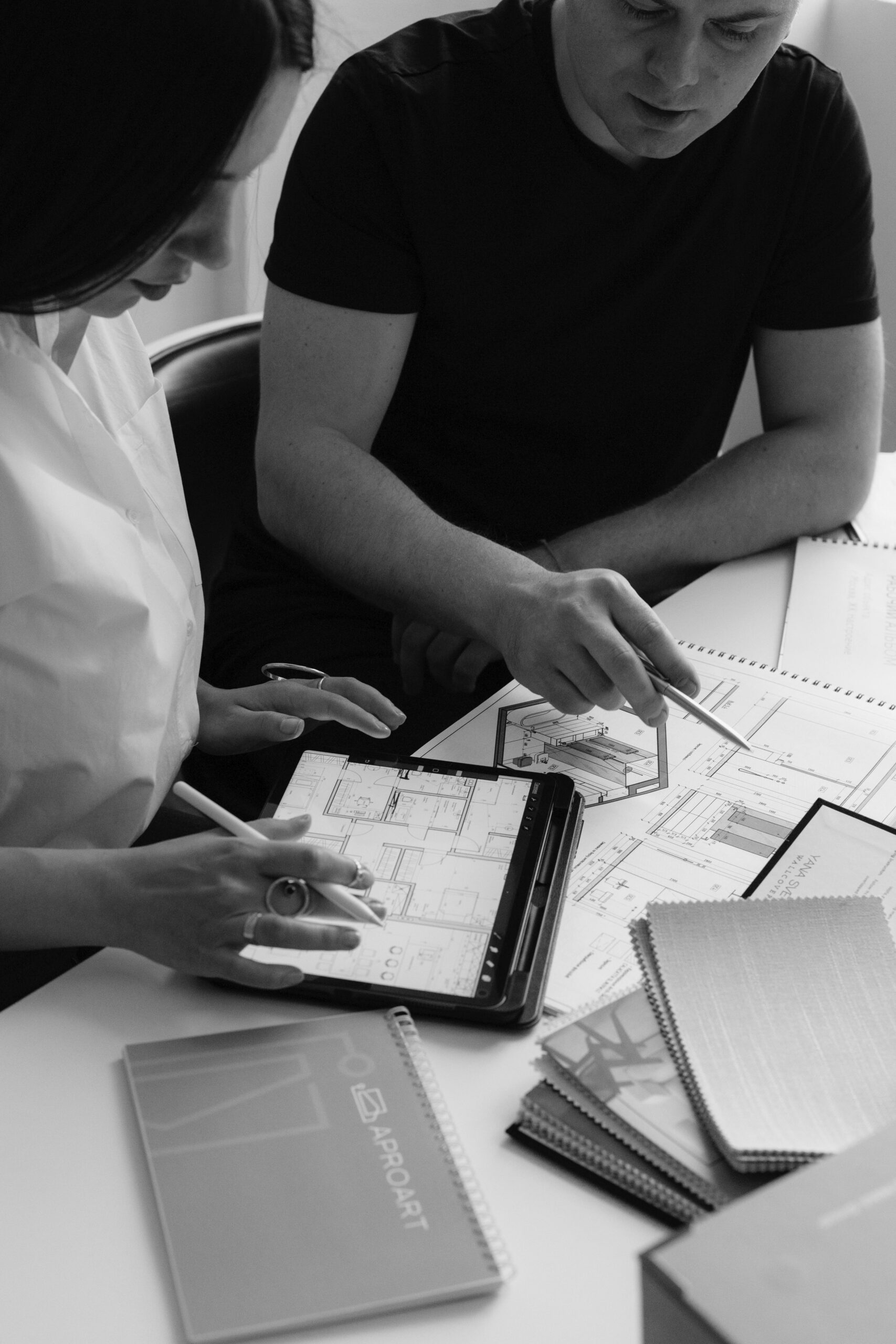What’s the Difference? UX Design and Web Development
UX Design and Web Development are both crucial roles in creating successful digital experiences for all types of users. While UX designers focus on user experience, interface design, and usability, web developers concentrate on technical aspects that help turn design concepts into functional, interactive websites. A cohesive partnership between UX designers and web developers leads to a well-balanced digital product, where user-centric design principles align with the technical capabilities, resulting in a website or application that not only meets user expectations but also performs optimally.
Throughout this overview, we hope to provide insights into the differences in tools, technologies, education, and skill sets, offering a nuanced understanding of how these disciplines complement each other while requiring unique expertise in their respective domains. Those who are skilled in both domains open doors to new opportunities as a well-rounded UX and Web Development professional.
Defining UX (User Experience) Design

Key principles and goals of UX design include a focus on user-centered aspects like accessibility, clarity, flexibility, and aesthetics. By focusing on these aspects of digital experiences, from a business website to an online ordering checkout process, UX designers can consider the needs and abilities of many different users.
UI (User Interface) Design is important to note as close to UX Design but a bit different. Whereas UX designers focus on user experiences, UI designers deal with the interactive elements on a website, such as buttons, widgets, scroll bars, search fields, etc. Those who have skills in UX and UI give themselves an upperhand on how to customize interactive elements with a user focus. Both specialized areas of digital design, UX and UI design share a focus on detail and interactive user experiences.
Defining Web Development
Web development includes the work that goes into the creation and maintenance of a website or other digital application. Using a variety of coding languages and techniques, web developers ensure websites “are functional, user-friendly, and visually appealing while also meeting additional project specifications.”
There are 3 areas of web development: Front End, Back End, and full stack development. Front End development involves creating user interfaces and experience of a website, using HTML, CSS, and JavaScript to code visual elements; Back End development focuses on server-side operations and database management, using advanced programs like Java and Python to code and maintain databases, servers, and applications for a website. Full stack web development encompasses both frontend and backend skills, allowing proficiency in all aspects of web development.
Where UX Design and Web Development Overlap
At the core of creating successful digital experiences is the collaboration between UX designers and web developers. Through effective communication, both roles can come to clearly understand project goals, user needs, and technical constraints. Ensuring a seamless user experience, balancing aesthetics and functionality, and continued updating of features is a shared responsibility. The overlap between UX design and web development is where creativity meets technical expertise, resulting in digital experiences that engage users and drive business success. As noted by freelance writer Rosie Allabarton, “Without the web developer, the UX designer would simply have theories, research and ideas for optimizing the product. Without the UX designer the web developer would have a website that doesn’t meet the needs of the people using it.”
Yet, UX Design and Web Development have vastly different responsibilities in order for digital applications to work effortlessly.
Where UX Design and Web Development Differs
UX Design: Crafting User Experiences for Seamless Interaction

For UX designers, knowledge and expertise in wireframing, prototyping, and user testing tools is essential during the UX design process. These tools enable designers to create visual representations of user interfaces without getting bogged down in intricate design details and to test usability, functionality, and user flow before investing time and resources into full development.
- Wireframing tools allow designers to quickly sketch out the basic layout and structure of a digital product, focusing on elements such as content placement, navigation flow, and information hierarchy.
- Prototyping tools take wireframes to the next level by allowing designers to create interactive mockups that simulate the user experience. Wireframes and Prototypes serve as blueprints for the final design, allowing designers to iterate quickly and communicate ideas effectively with stakeholders and other team members.
- User testing tools are invaluable for gathering feedback from real users throughout the design process. By observing how users interact with prototypes or existing products, designers can gain insights into user behavior, preferences, pain points, and areas for improvement. Incorporating user feedback into the design process helps UX designers create products that are intuitive, user-friendly, and optimized for the needs of targeted audiences.
In order for UX designers to be able to successfully use these tools, they must have an understanding of User Research as well as Information Architecture (IA) principles to create digital experiences that are tailored to audience needs through offering easy to navigate user interface ideas.
- User Research involves understanding the needs, behaviors, and preferences of the target audience through various qualitative and quantitative methods such as interviews, surveys, observations, and analytics. UX designers must possess strong user research skills to gather insights into user needs and behaviors, which serve as the foundation for designing intuitive and user-centric experiences. By empathizing with users, designers are able to create products that address their pain points, fulfill their goals, and ultimately provide a positive user experience.
- Information architecture (IA) involves organizing and structuring content in a logical and intuitive manner to facilitate navigation and information retrieval within a digital product. UX designers use IA principles to create clear and hierarchical structures that help users find the information they need efficiently. Proficiency in information architecture enables UX designers to create user interfaces that are easy to navigate, understand, and use.

Web Development: Building Functional and Interactive Interfaces
Knowledge in front-end frameworks and libraries are instrumental in creating the user interface and enhancing user experience as a web developer. Developers utilize frameworks like React.js, Angular, and Vue.js to efficiently build interactive and dynamic web applications. These frameworks provide pre-written code components and functionalities, allowing developers to focus on crafting engaging user interfaces without reinventing the wheel. Additionally, front-end libraries such as Bootstrap streamline the development process by offering ready-to-use CSS styles, JavaScript plugins, and HTML components for creating responsive and visually appealing websites. Web developers must be proficient in programming languages commonly used for web development in order to create user interfaces.
- HTML (Hypertext Markup Language) is the standard markup language for creating web pages and defining their structure.
- CSS (Cascading Style Sheets) is used to style and format the appearance of web pages, including layout, colors, and fonts.
- JavaScript is a powerful scripting language that enables interactive and dynamic functionality on web pages, such as animations, form validation, and client-server communication.
Similarly, expertise in back-end frameworks like Express.js (for Node.js), Django (for Python), Ruby on Rails (for Ruby), or Laravel (for PHP) enables developers to build robust server-side applications and APIs. These frameworks provide ways for handling HTTP requests, routing, authentication, and data processing, facilitating the development of scalable and maintainable web services. Concurrently, databases such as MySQL, PostgreSQL, and MongoDB are utilized to store, retrieve, and manage application data efficiently. By leveraging frameworks and adhering to best practices in web architecture, developers can accelerate development timelines, improve code quality, and deliver reliable and scalable web solutions.
Together, front-end frameworks, back-end technologies, and databases form the backbone of modern web development, empowering developers to create high-performance web applications that meet the demands of today’s digital landscape.
While UX designers focus on understanding user needs, creating intuitive interfaces, and conducting extensive research and testing, web developers bring these designs to life through their mastery of coding languages, frameworks, and back-end technologies. Through collaboration efforts, UX designers and web developers can bridge the gap between design concepts and technical implementation, ensuring that digital products not only meet user expectations but also perform optimally across various platforms and devices.
By embracing the collaborative synergy between these realms, professionals can contribute to the creation of digital landscapes that are not only visually appealing but also functionally robust, ensuring a user-centric approach that resonates with the ever-evolving needs of the digital world.
For those aspiring to venture into these specialized domains, it’s encouraged to explore both UX design and web development to gain a holistic understanding of digital creation. By honing skills in both disciplines, individuals can position themselves as versatile professionals capable of delivering comprehensive solutions to meet the evolving needs of the digital landscape.
Interested in upskilling your web design skills? As a vocational tech school, we offer a range of certificate programs and two that are specifically geared towards web design. Consider checking out what we have to offer through our UX design and front-end web development certificates!
